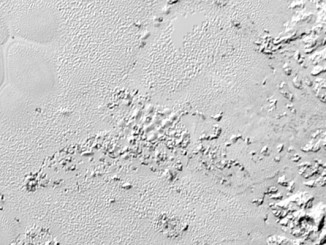
Pluto could still have a liquid sub-surface ocean
NASA’s New Horizons spacecraft spied extensional faults on Pluto, a sign that the dwarf planet has undergone a global expansion possibly due to the slow freezing of a sub-surface ocean. A new analysis by Brown University scientists bolsters that idea, and suggests that ocean is likely still there today.









